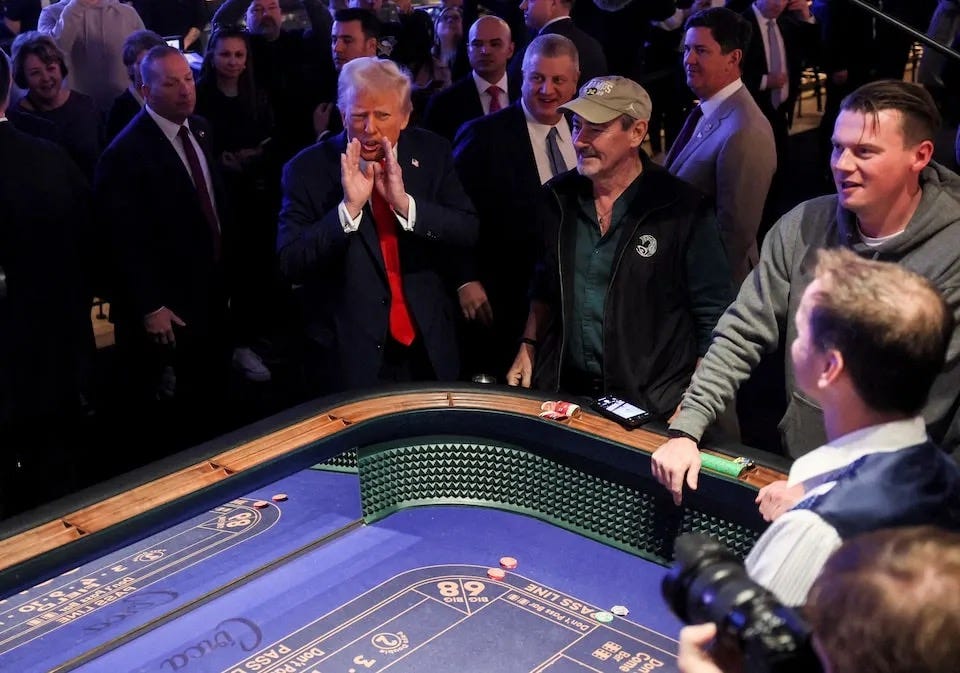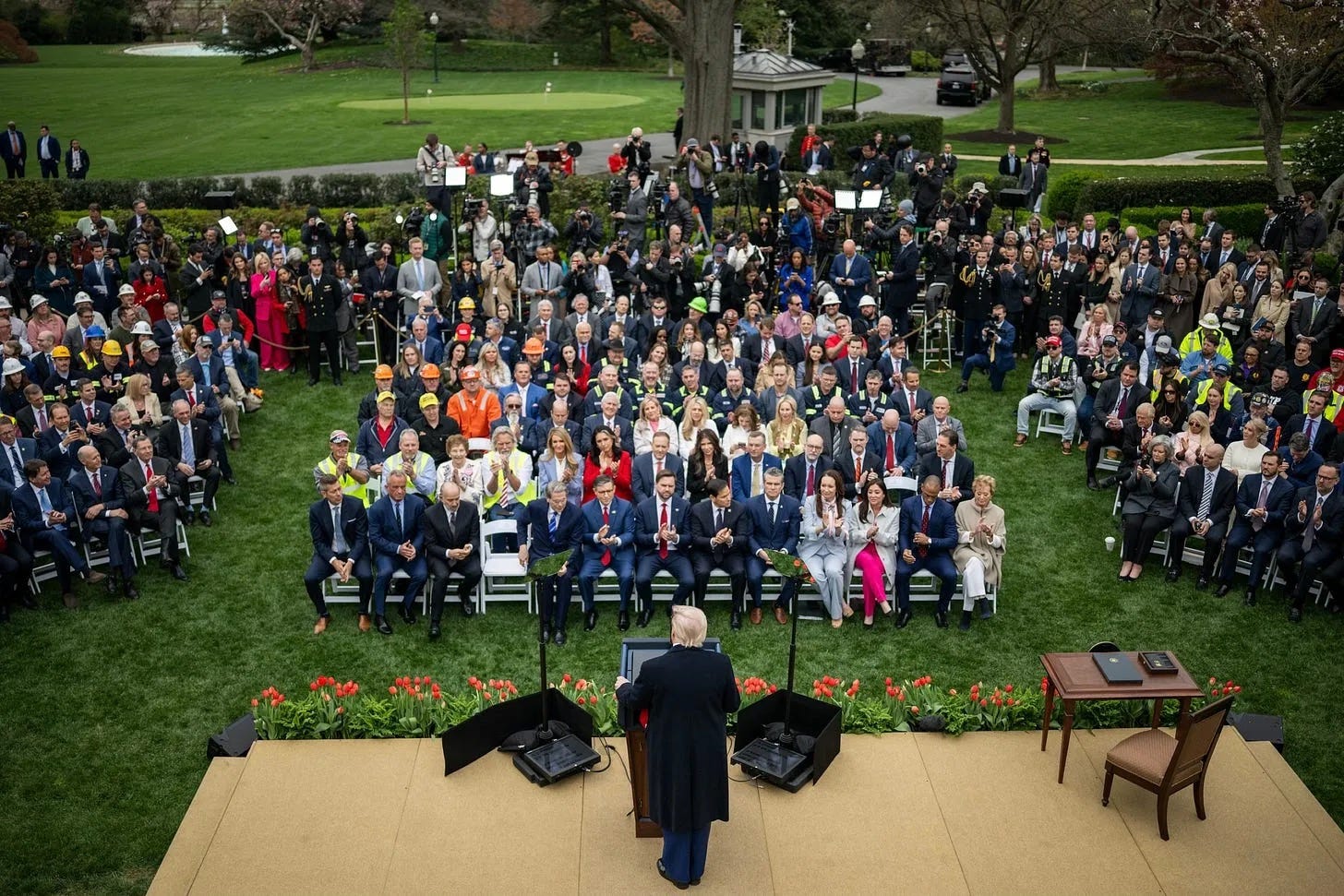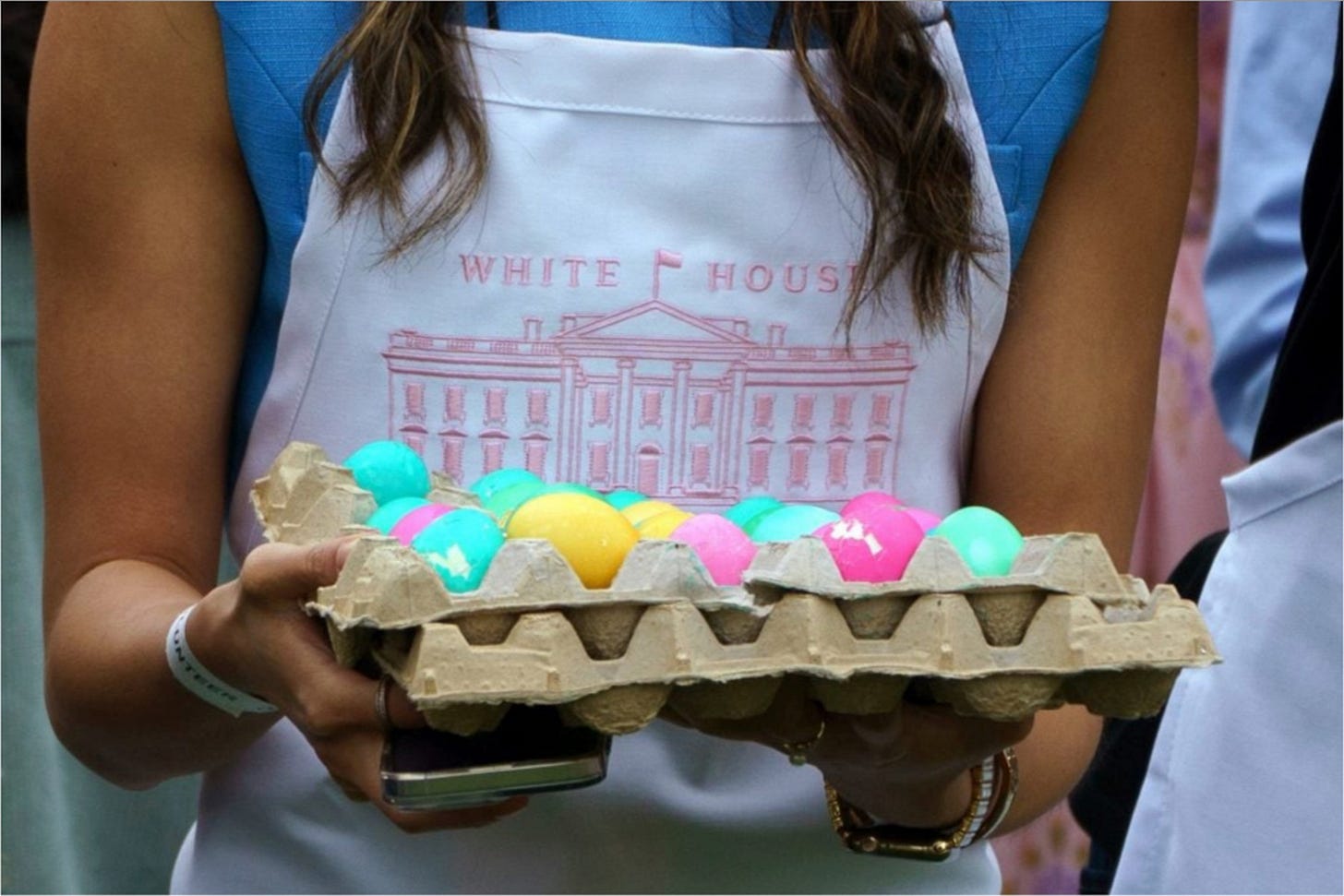Double Takes: Healthy, Wealthy…And Lies
In our new "Double Take" feature, we freeze-frame the images officials hope you'll miss—from detention SOS signals to political theater disguised as health policy.
As markets swoon from tariff chaos and billionaires redirect government funds, this January 25th photo from the Circa Resort and Casino in Las Vegas evokes much more than Trump's four casino bankruptcies—a record unmatched by any other significant American business. Instead, American taxpayers are now the unwitting gamblers while Trump plays with house money, making trillion-dollar bets with the country's economic future.
Welcome to the inaugural edition of "Double Takes" —because democracy dies at scroll speed.
In an era when critical images flash by in milliseconds, I’m hitting the pause button on photos that deserve a longer look. The current visual firehose isn't just overwhelming—it's dangerous. As we speed-consume thousands of images daily, especially the more run-of-the-mill ones, visual evidence of power abuses, policy contradictions, and propaganda operations slips past us. This feature exists because what you don't stop to see is often precisely what someone hopes you'll miss, or not think twice about.
In Double Takes, I'm seeking out visual hypocrisy when cameras catch politicians contradicting their own messaging. I spotlight overlooked images that disrupt the echo chamber. I dissect visual propaganda by examining how composition and staging manipulate public perception. And I celebrate photographic resistance when photographers and subjects challenge the party line.
In this kick-off edition, I focus on policy. Or what passes for it.
1. Health Policy as Performance Art
The Measles Contradiction

At first glance, the photo above appears to be a routine vaccination photo—a healthcare worker gently holding a child's hand while administering the MMR vaccine. But context transforms this image into something far more significant. The photograph was taken during the Texas measles outbreak that has now grown to at least 159 cases.
The painful irony cuts deeper daily as RFK Jr. actively undermines the response: promoting vitamin A as treatment over proven protocols, appointing fellow skeptics to key positions, blocking CDC officials from televised briefings, and quietly gutting vaccine outreach programs. This conventional clinical moment—a nurse administering the vaccine Kennedy spent years demonizing—delivers a visual indictment of an administration where children get sick from the secretary's theories.
Through the Looking Glass: Autism as Political Theater

R.F.K. Jr.’s press conference inadvertently produced the perfect visual metaphor for his approach to public health. More than one photographer captured him positioned behind reflected autism statistics, creating a composition where Kennedy appears physically embedded within “distorted” data.
The image is revelatory: a reflective barrier separates Kennedy from his audience while he stands amid warped statistical projections. This visual arrangement perfectly captures how his HHS has merged objective health data with personal ideology, creating inherent skepticism about the presentation.
While Kennedy used rising autism diagnoses to advance his long-held theories, the press conference notably omitted the scientific consensus that increased rates primarily reflect improved detection rather than an epidemic. The image captures the essential distortion at work: public health data repurposed as political theater.
Kennedy's Navajo Encounter

Talk about enabling.
The New York Times' headline—"RFK Jr. Hits His Stride in Arizona as His Chronic Disease Tour Wraps"—directly contradicts what's happening in their own photograph. Baumgaertner's image captures a Navajo delegate confronting Kennedy with evidence of his administration's health service cuts to Indigenous communities.
This visual protest exposes the stark contradiction between Kennedy's chronic disease prevention rhetoric and his department's actions, slashing diabetes research funding. Yet the Times frames this confrontation as merely a speed bump in Kennedy's "successful tour," allowing their headline to override the visual evidence.
2. Voodoo Economics
Liberation Day
This uncredited photo is from the While House Flickr’s “Liberation Day” album. While the day and event will be remembered in history as the moment Trump's tariffs undermined a soaring stock market and fractured the global economic system, the fixation here, per usual, is one more slavishly captive audience and the proud display of Trump 47’s most famous prop—the traveling executive order desk and chair. The most delicious element and Trump tell, however, like a thought bubble indicating where Trump’s genuine interest lies, is the weird inclusion of the White House putting green.
The Price of Eggs
The annual White House Easter Egg Roll became a case study in Trump-era quid pro quo politics. Thousands of free eggs in gaudy pink, gold, and turquoise lined the White House lawn—"donated" by egg producers while Americans pay double last year's prices at the grocery store. Meanwhile, expanded corporate sponsorship reinforced what the Washington Post called "the ongoing presidential extortion program."
By the way, did those eggs look a little chipped up to you?
The Grift That Keeps on Giving
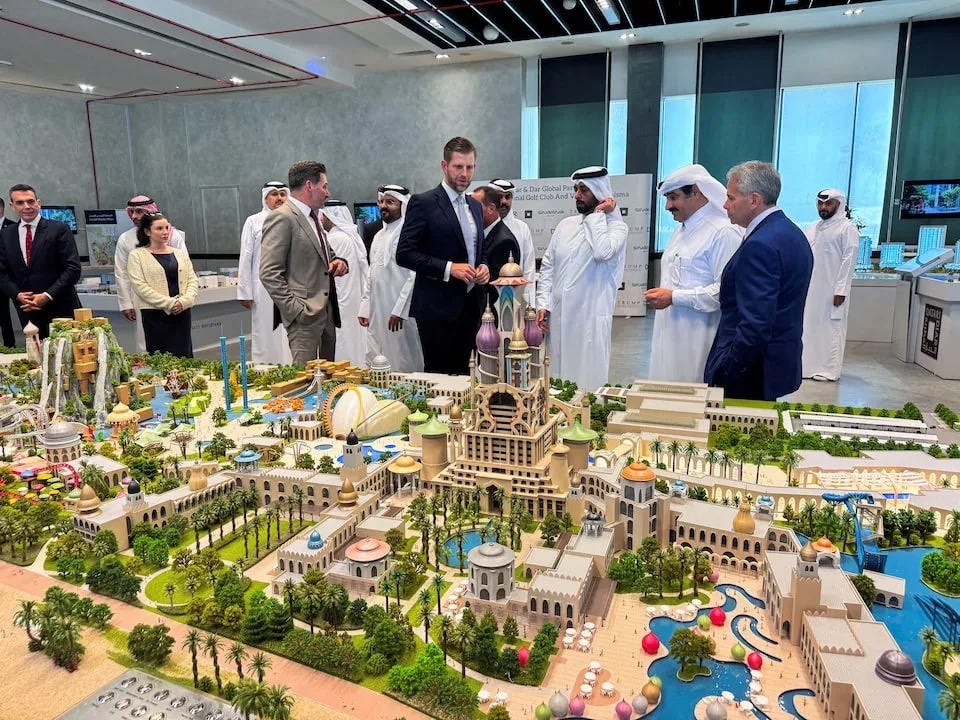
Eric Trump's Qatar resort deal captures the ongoing conflation of government access and family business. The miniature model—a literal small-scale version of the family's outsized ambitions—offers the perfect visual for their approach to governance: a theme-park version of diplomacy where policy and profit merge seamlessly. This Qatari venture emerged just as the “DJT” cryptocurrency, launched by Donald Trump Jr., attracted a $300 million investment from UAE-based firms, highlighting the surge of Persian Gulf money into Trump enterprises. All the while, the administration continues to shape Middle East policy.
3. Visual Resistance
Refugee Prisoner Camps
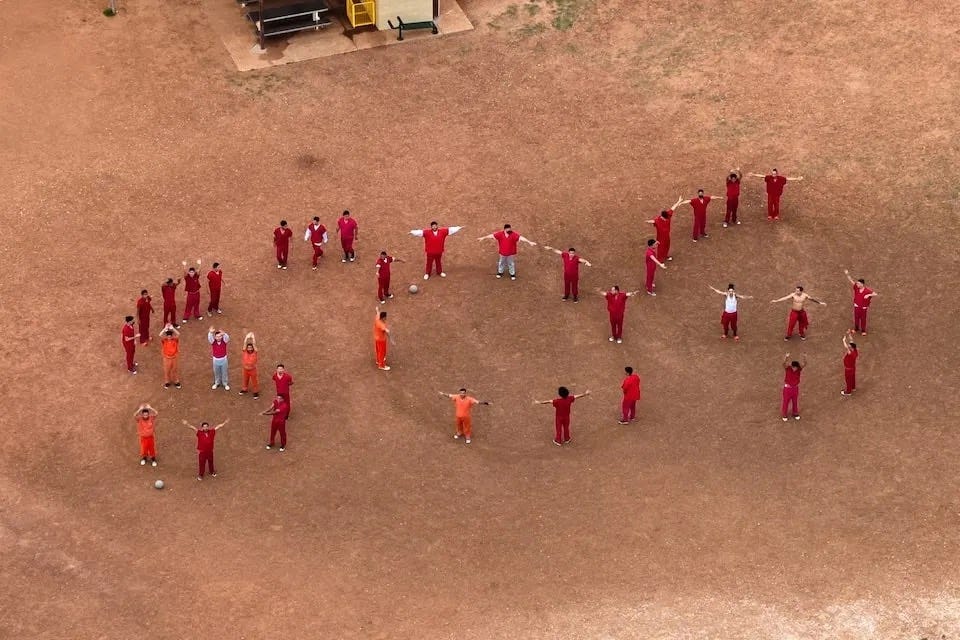
When the administration bars journalists from detention centers, the press goes airborne. Reuters' dramatic drone footage of detainees spelling "SOS" with their bodies represents a new front in the battle against information blackouts.
The saccharine-named "Bluebonnet" facility—a private prison rebranded with Texas wildflower imagery—can't hide its true purpose when seen from above. These aerial shots bypass the administration's media blockade, capturing what ground-level access would never permit: coordinated protest and desperate communication from people whose voices have been systematically silenced.
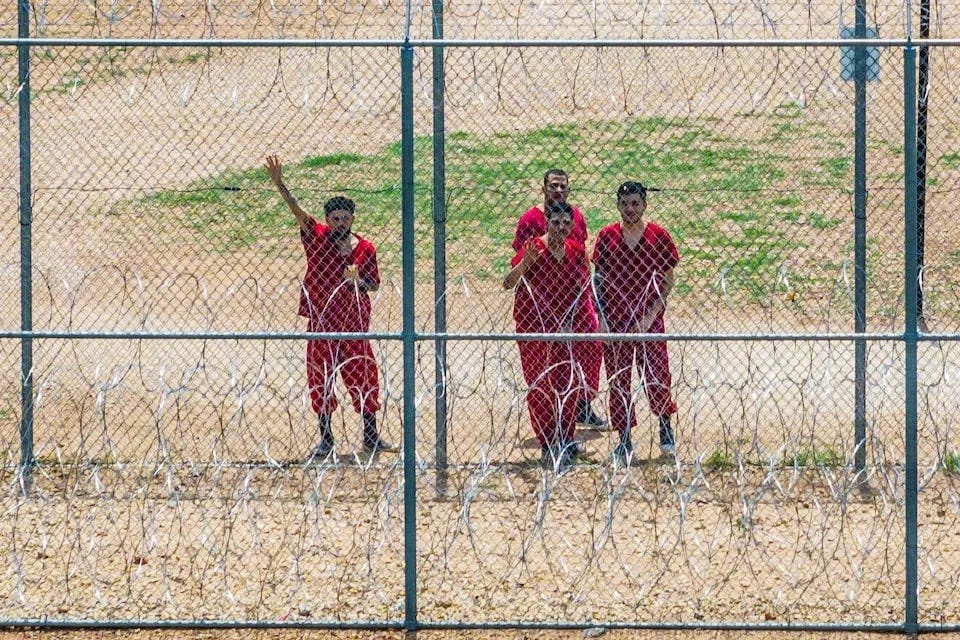
It's visual journalism adapting in real time. The detainees—aware of this aerial surveillance—transform from passive subjects into active communicators, using the only resource available: their bodies arranged as human typography visible to the machines hovering above.
This isn't just photojournalism; it's resistance from both sides of the lens.
International Pushback
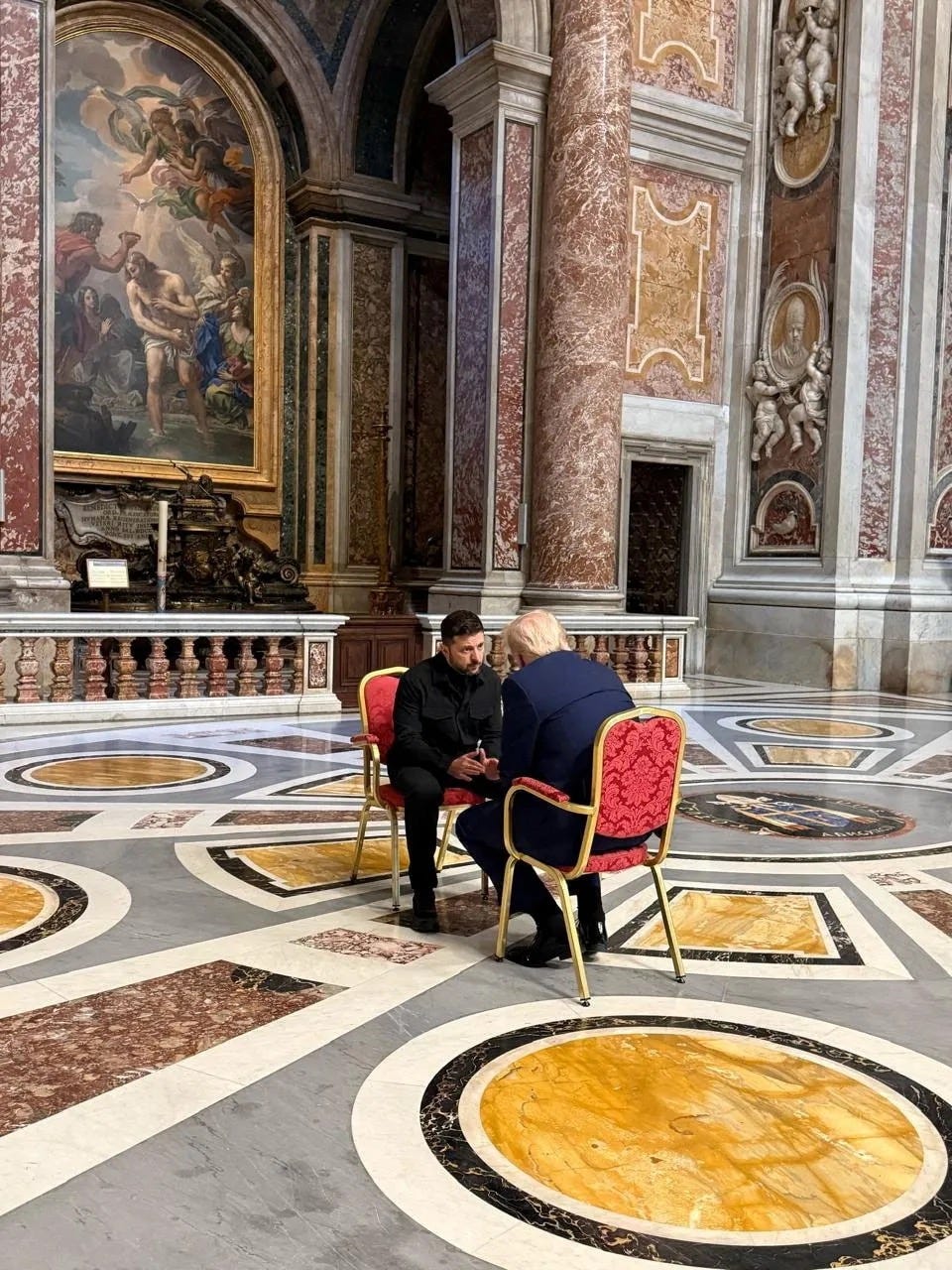
While media outlets circulated images of Trump dozing during the Pope's funeral, Ukraine's press office released this strategically composed alternative. This visual coup transforms a solemn occasion into a diplomatic opportunity.
The setting couldn't be more calculated: marble, gold, crests, and Vatican grandeur provide the aesthetic backdrop that appeals to Trump's well-documented tastes. More telling is who controls the conversation: Zelensky speaks while Trump listens—a visual reversal of the actual power dynamic.
This image cements their alignment through visual shorthand, released days after Trump approved Ukraine's mineral rights deal with American companies (an arrangement yielding no actual resources for years). Zelensky's team understands Trump's psychology perfectly: flattery through proximity to grandeur while directing the conversation.
Judging by Ukraine's continued support, it appears to be working.
Back to the Eggs
While discussing resistance visuals, let's end with Chip Somodevilla's holiday coup. His lens caught Trump doing what Trump does best—transforming a warm, apolitical moment into yet another self-referential "fight, fight, fight" rallying cry. Nothing says not-normal quite like crayons and combat rhetoric.
Thank you for visiting Reading the Pictures. Despite our visually saturated culture, we remain among the few sources for analyzing news photography and media images. This post is public, so feel free to share it.
To receive new posts and support our work, consider becoming a free or paid subscriber. Because we are a non-profit, your subscription is tax-deductible.



